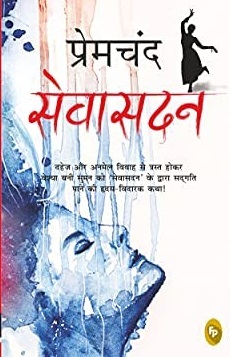Sevasadan
Highlighting the social issues prevalent in the country at the turn of the twentieth century, Munshi prenchand’s sevasadan (1918) narrates the poignant tale of Suman, who is trapped in an unhappy, mismatched marriage owing to the evils of the Dowry system. It traces her journey from being the virtuous housewife to being ‘Sumangali’, a courtesan in the kothas of Varanasi. How will Sumac find her redemption?.
Munshi Premchand was born in Dhanpat Rai Shrivastava on 31 July 1880 in Lamhi village near Varanasi, India. He began his writing career in 1901. His first short novel, Asrar e Ma’abid (Secrets of God’s Abode), written in Urdu was published in a weekly between 8 October 1903 to February 1905. He wrote on a variety of topics including prostitution, poverty, dowry, child widowhood, and feudal system, using his works as a vehicle for arousing public awareness. He was the first Hindi author whose works featured social realism. Premchand has penned down hundreds of short stories, more than a dozen novels, plays, and several critical essays. His most celebrated works include Vardaan (1912), Seva Sadan (1918), Premashram (1922), Rangbhoomi (1925), Nirmala (1927), Pratigya (1927), Gaban (1931), Karmabhoomi (1932), Godaan (1936). Premchand breathed his last on 8 October 1936. One of the most influential writers of Indian literature, his works continue to remain popular and are translated in various foreign languages across the world.
You need to log in to Rate the book
Top rated books in this category
Other books by the same author
Those who have read this book also read these books








































